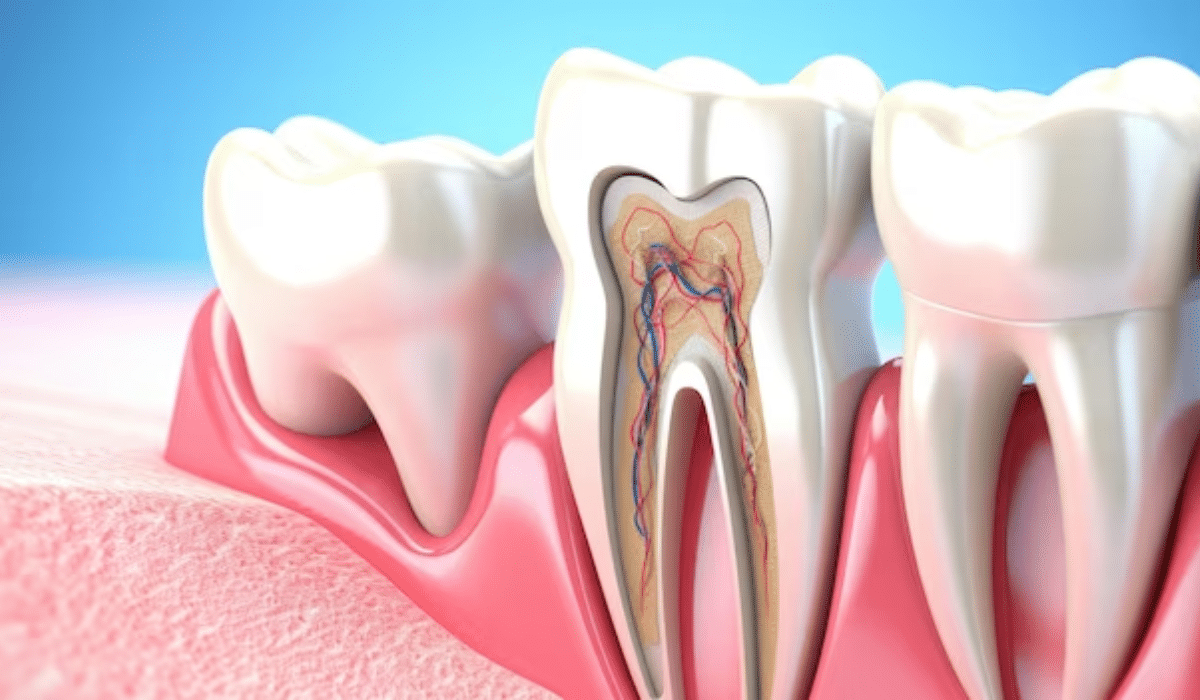Our teeth are incredibly resilient, but they aren’t even invincible to damage and infection. One potential dental problem that can cause significant discomfort is a root canal infection. While the thought of a root canal might raise some eyebrows, early diagnosis and treatment can save your tooth and prevent further complications. This blog post dives into the three most common signs of a root canal infection that you shouldn’t ignore. Also, we’ll empower you to take charge of your oral health and seek timely dental care.
Persistent and Throbbing Toothache
A dull ache or sharp pain in a specific tooth is often the first indication of a potential problem. The root canal, located at the core of the tooth, houses nerves and blood vessels. When bacteria invade this area due to deep decay, trauma, or a cracked tooth, it triggers inflammation and pain. However, when it comes to root canal infections, the pain is typically much more intense and persistent.
The pain might be constant, throbbing, or pulsating, intensifying at night or when you bite down. Besides, the surrounding area may feel sensitive to touch or pressure. Over-the-counter pain relievers might offer temporary relief, but the pain will likely return.
Lingering Sensitivity to Hot and Cold
The inflamed pulp within the tooth becomes hypersensitive, making it react intensely to even mild temperature changes. This is a clear sign that the infection has progressed and requires prompt attention. Tooth sensitivity to hot and cold is a common experience, often fleeting and caused by factors like thin enamel or exposed dentin.
However, with a root canal infection, the sensitivity becomes much more pronounced and persistent. You might experience sudden and sharp pain when consuming hot or cold beverages, even after the drink has reached room temperature. The pain can linger for several minutes or even longer after the stimulus is removed. Besides, the sensitivity might be present even without consuming anything, indicating heightened nerve activity due to the infection.
Visible Swelling and Gum Discomfort
While a slight gum puffiness might not raise immediate concern, a noticeable and persistent swelling around the infected tooth is a red flag for a potential root canal infection. The body’s immune system sends white blood cells to fight the infection, leading to inflammation and swelling. This is a natural response, but it highlights the need for professional intervention to address the underlying infection and prevent further complications.
The swelling might appear localized around the affected tooth or spread to the jawbone and surrounding tissues. Your gums might become red, tender, and bleed easily when brushed or flossed. In severe cases, an abscess (a pus-filled pocket) might form near the tooth, causing further discomfort and potential facial swelling.
Don’t Delay: Prompt Dental Care for a Thriving Smile
Experiencing any of the following symptoms can indicate a potential root canal infection, and it’s critical to schedule an immediate appointment with your dentist to prevent further complications:
Persistent pain: This can range from a mild ache to a throbbing, sharp pain, especially when chewing, biting down, or exposed to hot or cold temperatures.
Swollen gums: The gum tissue surrounding the infected tooth may become red, inflamed, and tender to the touch. In severe cases, swelling can extend to the face and jaw, causing discomfort and difficulty opening your mouth.
Pimple-like bump: A pus-filled abscess may form on the gum near the infected tooth, causing additional pain and potential drainage of pus with an unpleasant odor.
Tooth sensitivity: The tooth may become hypersensitive to hot, cold, sweet, or sour foods and beverages.
Discoloration: The infected tooth may darken or become discolored, appearing grey, brown, or yellow compared to surrounding teeth.
Chronic bad breath: A persistent unpleasant taste or bad breath (halitosis) can be a sign of infection.
Perform a comprehensive examination: This includes a visual inspection, probing the tooth and surrounding gum tissue, and taking X-rays to assess the extent of the infection and the tooth’s root structure.
Discuss treatment options: Based on the diagnosis, your dentist will explain the best course of action, which may involve root canal therapy.
Additional Tips for Maintaining Stellar Oral Health
Brushing technique matters: Brush for two full minutes using a soft-bristled toothbrush, angled 45 degrees against your gum line. Make gentle, circular motions to remove plaque and bacteria from all surfaces of your teeth, including the back and the chewing surfaces. Remember your tongue, as it harbors bacteria, too!
Upgrade your tools: Consider using an electric toothbrush, which can effectively remove more plaque than manual brushing. Explore interdental brushes, which can be especially helpful for cleaning between teeth with tight spaces.
Embrace the power of fluoride: Choose a fluoride toothpaste that strengthens your tooth enamel and fights cavities. Look for the American Dental Association (ADA) Seal of Acceptance on your toothpaste to ensure it meets safety and effectiveness standards.
A root canal infection can be a serious dental issue, but with early detection and prompt treatment, you can save your tooth and avoid potential complications. By being familiar with the three common signs mentioned above, you can take action and schedule an appointment with your dentist as soon as possible. Remember, ignoring these signs can lead to further problems, so don’t hesitate to seek professional help. Taking care of your oral health is an investment in your overall well-being, and a healthy smile contributes to your confidence and quality of life.





